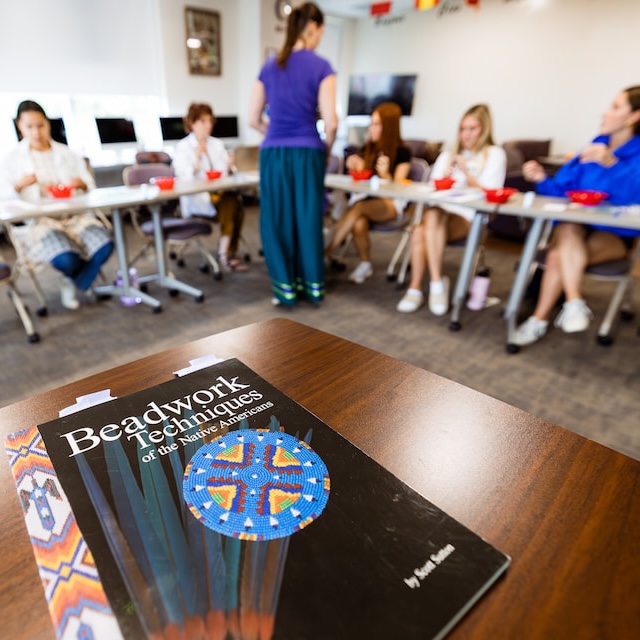Resources & Education
Explore resources to learn more about Native American and Indigenous peoples.

Make TCU a Welcoming Place
How can we respectfully engage with and attract more Native American employees and students to TCU? How do we use the most appropriate words and act in positive ways? How can we respectfully integrate Native American perspectives into our courses and programs? Our Native American Advisory Circle has created helpful guides to assist Horned Frogs in answering these questions and more.
- Engaging Native American Perspectives in Courses and Programs
- Recruiting Native American Employees and Students
Understand the Past
For proud Texans and Horned Frogs, our colonizing heritage is still at work in the way we do our business. Acknowledging this is uncomfortable, painful and difficult, but it’s what a deep commitment to diversity, equity and inclusion requires. Learning together, we can transform TCU into a place of meaningful inclusion, especially for Native American and Indigenous peoples.
- TCU and May 24, 1841
- TCU and May 24, 1841: The Broader Context
- Making Meaning out of the Village Creek Attack and TCU's Land Acknowledgment
Discover More
- Land Acknowledgment Teaching Guide
- Native American Monument Learning Guide
- Native American Nations Flag Project Learning Guide
- TCU Library’s NAIPI Digital Repository
Native perspectives in understanding TCU’s history
Being in Relation: Indigenous Peoples, the Land, and Texas Christian University, 1873-2023, co-edited by C. Annette Anderson, Theresa Strouth Gaul and Scott M. Langston, will be published by TCU Press in early 2025.
This book presents a collection of essays and interviews that centers Native perspectives in understanding TCU’s history and visualizing a future of meaningful relationships between Indigenous peoples, the land and the university.
In “Resilience Kicks In: An Interview with Tabitha Tan (Diné),” Tan ’99 powerfully narrates her experiences coming to TCU from the Navajo Reservation in 1994 and encountering a university that knew little about Native Americans. Her story is one of resilience, survival, loneliness, family and community, success, educating others, and advice to TCU.